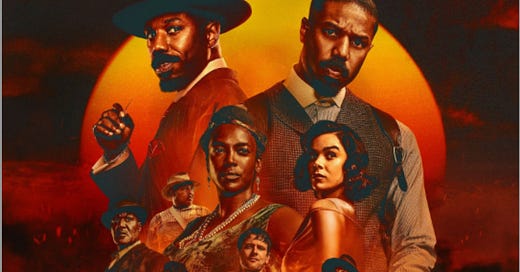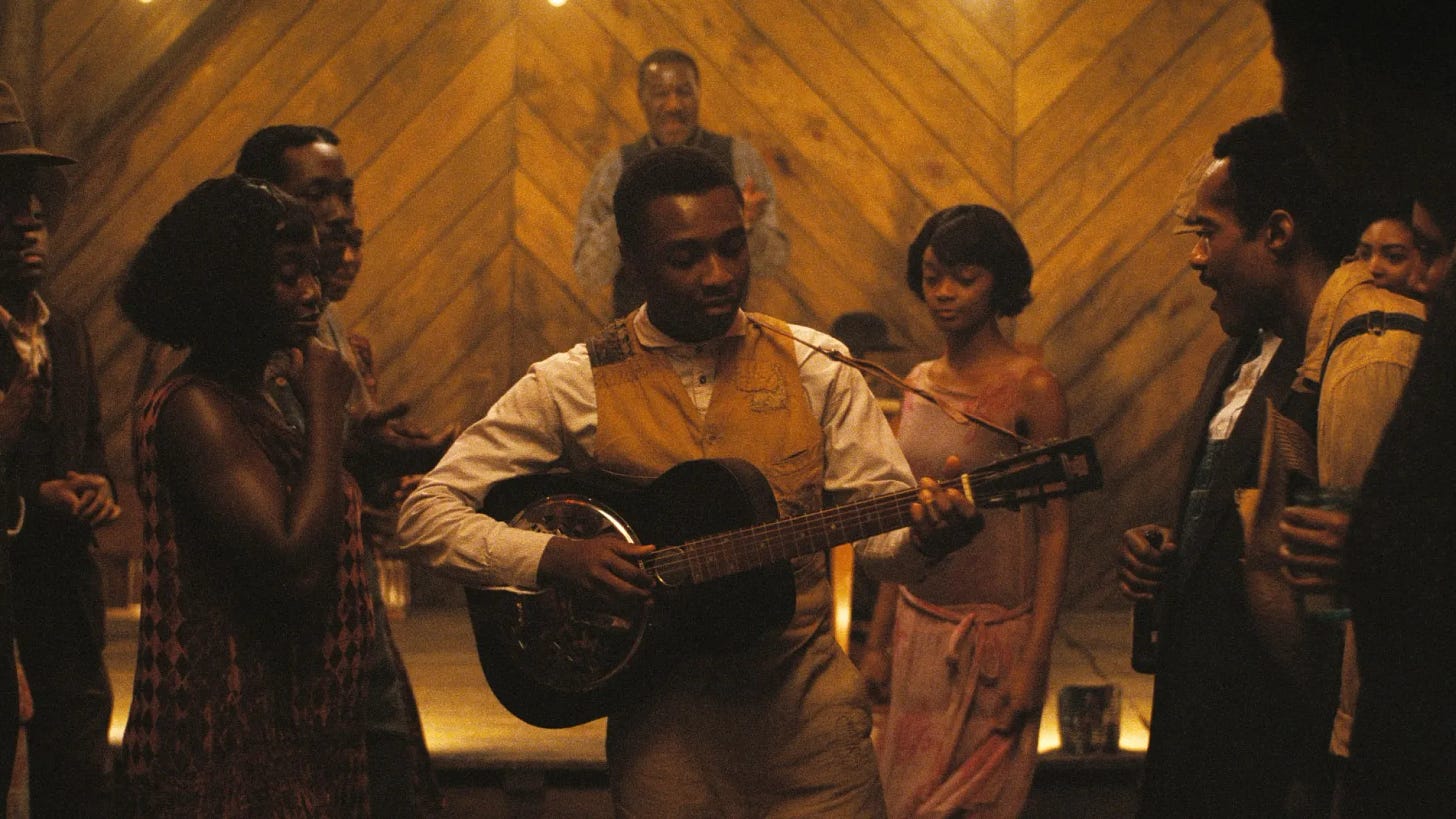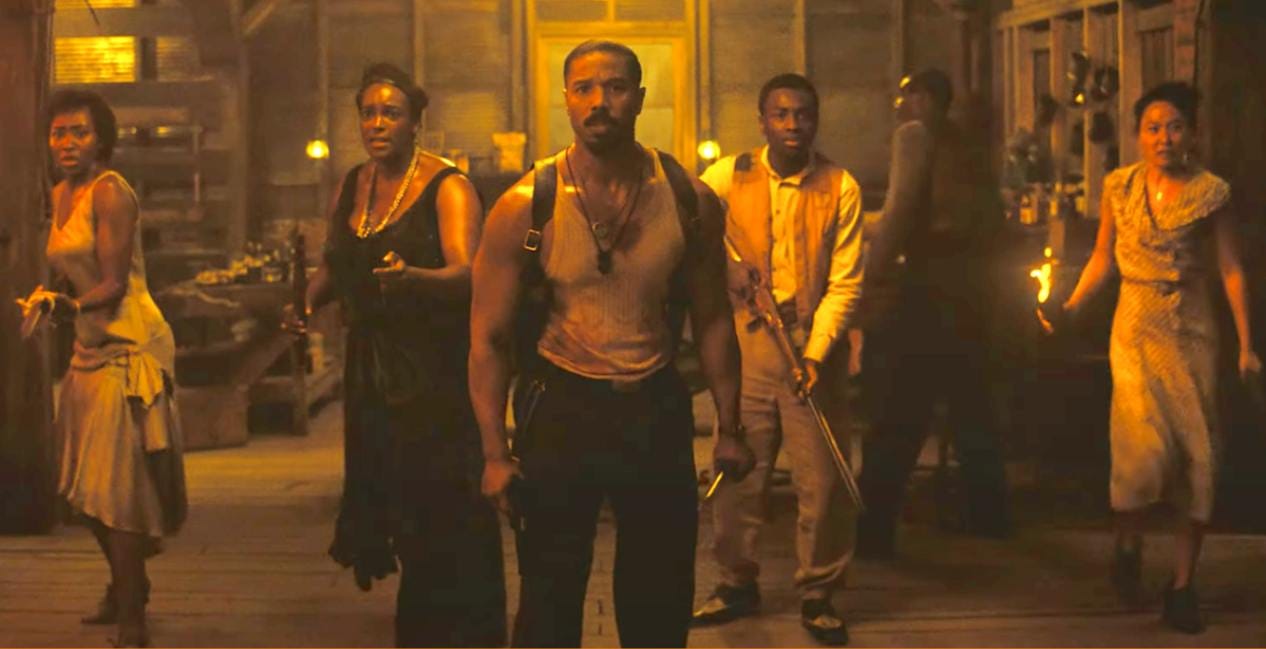Why Sinners’ Hypnotic Blues Music Is the Ultimate Form of Freedom
Ryan Coogler’s Latest May Become the Definitive Tribute to Delta Blues (Minor Spoilers Ahead)
Sinners, an inexplicably transcendent experience, conjures my jazz aficionado father’s rare gift.
From a live recording, he can identify the artist, venue, and year of jazz’s most legendary performances. Remarkably, he still possesses this exquisite talent in his eighties, even as other memories slip away.
We need a historical perspective to understand how this is possible.
For African Americans of a certain age, our grandparents, who lived through the Reconstruction era, possessed a profound understanding of the value of freedom.
Just one generation removed from slavery, they passed down the healing power of music to our parents, helping them endure the trauma carried through the Jim Crow era.
Deep, soulful harmonies and hypnotic rhythms created a sacred refuge, a pocket of joy that spoke to the soul and shielded the spirit with hope.
My grandfather’s 1920s Mississippi upbringing led him to the blues; my father’s 1960s civil rights experience shaped his love for jazz; and I, coming of age with MTV, embraced ’80s hip hop.
Like Club Juke’s patrons, I am the manifestation of my family’s musical heritage, a core element in Ryan Coogler’s most intimate work yet.
As a tribute to his uncle James Edmondson’s love for the blues and Mississippi tales, Coogler directed, wrote, and produced this exceptional genre-blending movie.
Sinners could become the definitive film honoring the revolutionary impact of early 20th-century Delta Blues musicians, whose music experts deem America’s most significant cultural contribution to the world.
In Sinners, Coogler built more than a film, he built a monument. One he’ll legally own in 25 years, but spiritually belongs to every descendant of the blues.
Coogler’s Proclamation for Freedom
In 1932, in the Jim Crow South, twin brothers Smoke and Stack (Michael B. Jordan), formerly employed by Al Capone in Chicago, establish a juke joint in Clarksdale, Mississippi. They assemble a homegrown crew, including their younger cousin Sammie (Miles Caton), a talented blues guitar player.
Following rocky reunions with their exes, Annie (Wunmi Mosaku) and Mary (Hailee Steinfeld), the prodigal Smoke Stack twins, embark on an inaugural night of dancing, food, and fun.
Their plans, however, take an unexpected turn when Remmick (Jack O’Connell), an enigmatic Irish wanderer, crashes their jubilant soiree.
Coogler crafts a wholly original, immersive film. He tackles themes of community, music, and culture, imbuing them with considerable emotional weight.
Central to Sinners is the idea of African Americans preserving their inherent liberties while resisting the demoralizing concessions imposed upon them by harmful outside forces.
Exploring this duality, Coogler asks a crucial question: What sacrifices are necessary for freedom, and what is the true cost?
Black communities established juke joints as safe havens, shielding themselves from external threats, aiming to exploit and claim what wasn’t theirs.
Sinners’ use of the supernatural punctuates the persistent problem of African American culture being appropriated through assimilation.
Remmick (Jack O’Connell) descends upon the party with one goal: to drain everyone’s joy and fuel his sinister agenda. To win Smoke and Stack over, he draws parallels between their painful pasts and Irish history, invoking a shared trauma as a form of brotherhood.
Under the guise of peaceful harmony, Remmick’s thinly veiled power grab aims to exploit Sammie’s musical gifts to breach the spiritual realm for his own gain.
Smoke and Stack, skeptical of Remmick’s plea, consider themselves invincible guardians, fiercely dedicated to protecting their community’s independence and ready to battle any evil to defend it.
Coogler reveals how the intentional erosion of African American cultural boundaries undermines core freedoms.
Though Black communities fight to prevent this erosion, often at great personal cost or without immediate success, preserving their unique identity remains a fundamental right they are determined to defend, not relinquish.
A Magical Fusion Between Delta Blues Roots and Its Widespread Legacy
In Sinners, Coogler uses the mythic aura of Robert Johnson not as a central narrative, but as a springboard, diving into the deeper interplay between race, religion, culture, and community, all viewed through the transformative impact of music in the African Diaspora.
At the heart of the film is a converted Mississippi sawmill turned juke joint. Once a site of unspeakable violence, it is now reclaimed as a sacred space for liberation and expression in the birthplace of the Delta Blues. It’s here that Sammie’s angelic voice becomes a vessel, weaving together generations of culture, pain, and joy. His sound doesn't just echo through the room, it reverberates across centuries.
A jaw-dropping centerpiece sequence, already a topic of cinematic buzz, demonstrates Coogler’s unparalleled craftsmanship, a feat of musical storytelling few directors could pull off. From the griot traditions of West Africa to the soul of American hip hop and the edge of futuristic funk, Coogler maps a lyrical lineage that spans continents and centuries.
Visually, he shows how music dissolves time and geography, creating moments of pure cinematic magic that film scholars will dissect for years. The journey culminates in sublime mid- and post-credit scenes that further affirm the film’s historical and emotional magnitude.
While music may be global, Coogler firmly roots the blues in its true origin, the African American experience. Born of suffering, resilience, and hope, it remains a distinctly Black art form, and Sinners is its cinematic shrine.
Breathtaking Performances Ground Vicious Vampire Gore
Coogler’s emotionally resonant, richly detailed, and socially conscious experimental horror film excites and thrills even the most devoted horror fans.
While comparable to Robert Rodriguez’s 1996 action-horror hybrid, From Dusk Till Dawn, Coogler’s influences extend beyond forty auteurs.
Inspired by the Safdie Brothers' kinetic style, Jordan Peele’s sharp satire, and Brian De Palma’s suspenseful grit, Coogler delivers a more sophisticated, relevant update of Rodriguez’s cult classic.
Using gangsta saga and Southern Gothic motifs, Coogler prioritizes character development, resulting in breathtaking performances that heighten the gore and drama.
Jordan, as the Smoke Stack twins, triumphs in two stellar roles of a lifetime. His distinctive, memorable portrayals drip with swaggering style and magnetic bravado.
Steinfeld and Mosaku are both exceptional. As Mary, a biracial woman, Steinfeld exudes a seductive confidence that embodies the adult identity she’s long desired. Mosaku, as the trusted Hoodoo woman, anchors the film with a powerful, grounded femininity that shapes its emotional and moral core.
Miles Caton shines as Sammie in Coogler’s horror-tinged blues opera, delivering an incredible performance in his first lead role.
Sinners’ musical lore is deepened by the inclusion of Delroy Lindo as the aging blues veteran, Delta Slim. Lindo, a scene-stealer with his humor and wisdom, is Oscar-worthy.
Li Jun Li as Grace Chow and Yao as Bo Chow with their authentic southern accents, personify the overlooked history of the Mississippi Delta Chinese, a vibrant culture persisting in the area.
Omar Benson Miller’s Cornbread and Jayme Lawson’s Pearline offer just enough dramatic tension to unify the film’s overarching themes.
Anchoring Sinners’ second half is Jack O’Connell’s spellbinding Remmick, a captivating ancient vampire who unleashes unholy mayhem. O’Connell uses his Irish roots to craft a frightening, anguished villain yearning to reunite with his departed loved ones.
Despite boasting breathtaking performances, Coogler’s gory bloodbath isn’t without flaws.
What’s the link between Remmick’s Irish roots and 1930s Mississippi? Irish immigration to America started around the mid-1800s because of famine and British oppression. Coogler leaves Remmick’s past unexplained for audiences to interpret, although he was aware of the cultural connection.
What was Coogler suggesting with the Choctaw tribe? Remmick’s possible arrival in America overlaps with the historic ties between the Choctaw and the Irish. Was he drawn to their spiritual abilities, like he is to Sammie, or were they vampire hunters?
A few minor blemishes in an otherwise extraordinary film.
An Unapologetically Black Instant Classic
Sinners is powerful, provocative, promiscuous, and profound. It’s astonishing that high-quality films are still being made, given that streamers now prioritize quantity over quality and executives remain focused on maximizing profits.
Creating a successful film for under $100 million, shot in large-format IMAX by Autumn Durald Arkapaw, the first female cinematographer to do so, without established IP and featuring a predominantly Black cast is a remarkable achievement.
Unlike most films that preach their message, Coogler allows layered dialogue to quietly honor the enduring legacy of Delta Blues.
I once saw Buddy Guy perform live at DAR Constitution Hall in D.C., a striking contrast, given that blues was born from racial oppression and the venue’s namesake has white supremacist roots.
We interpret film, like any art, through our own personal prisms, which helps explain Coogler’s motivation for telling this story.
Coogler isn't just making movies, he’s building legacies. Each frame challenges, moves, and lingers long after the credits roll.
Have you seen Sinners? What stood out to you most? Drop your thoughts on Coogler’s musical tribute in the comments below.








